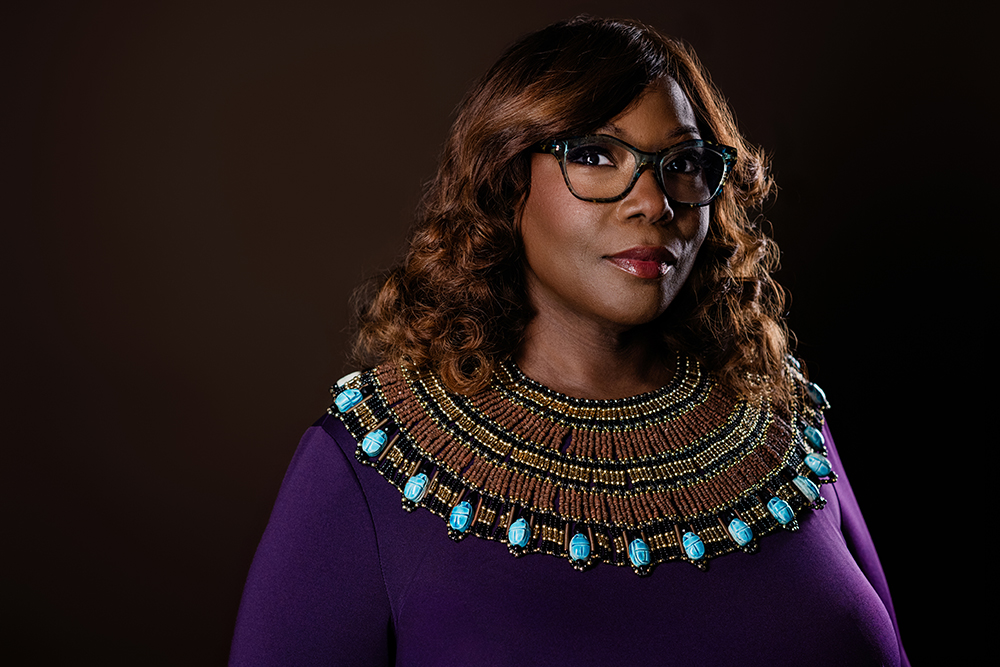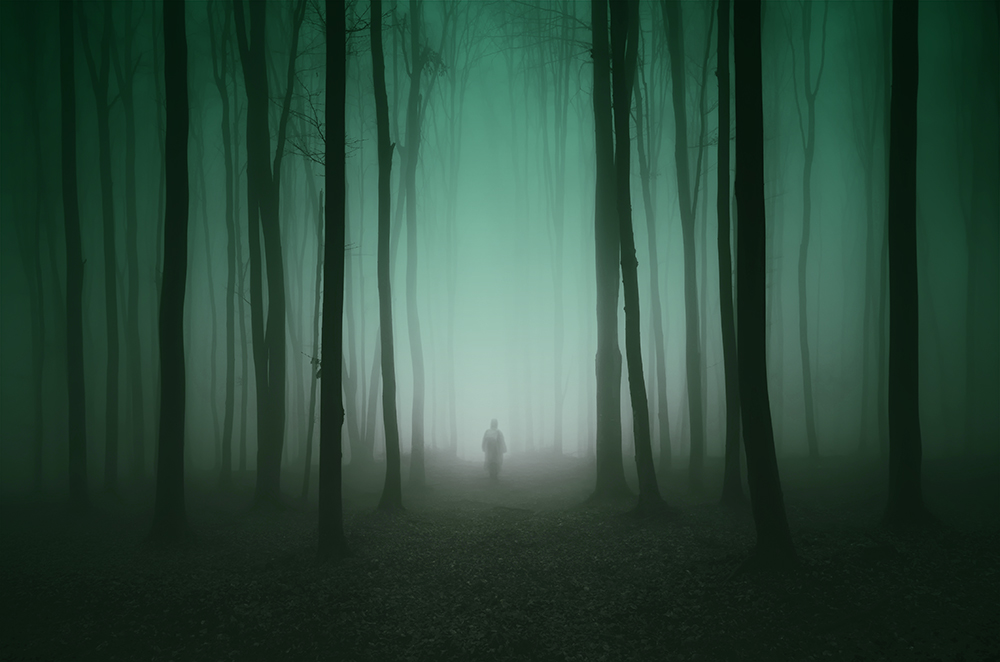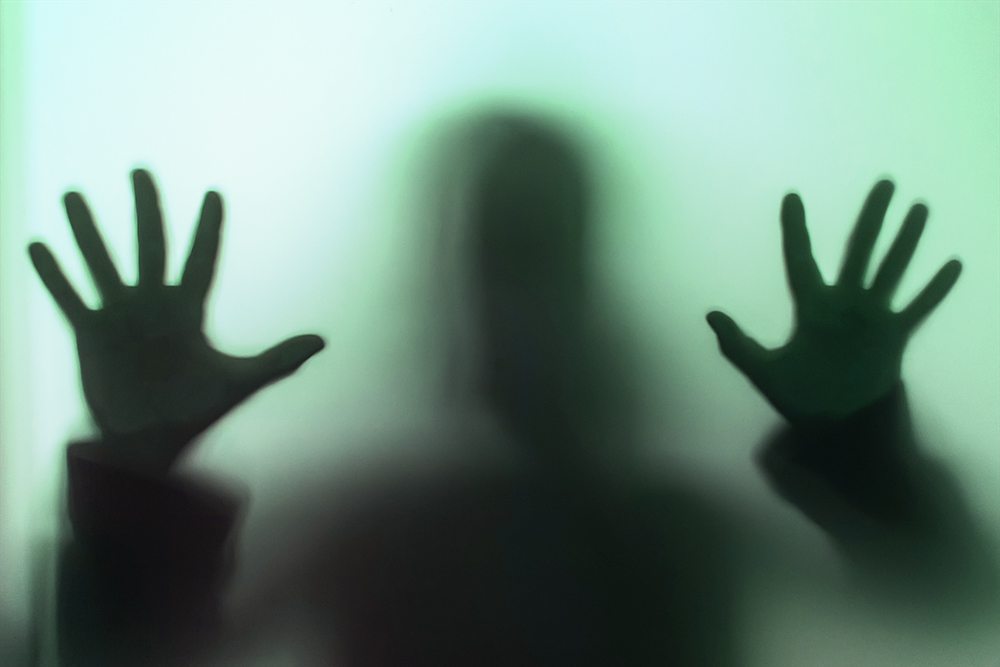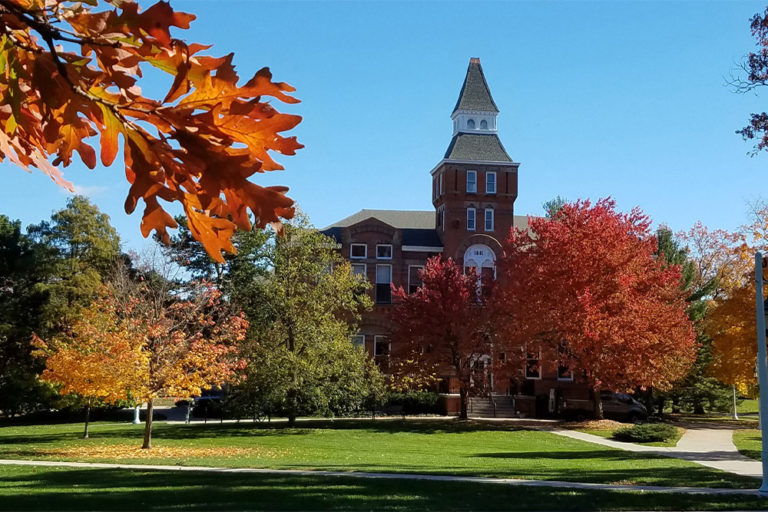The genre of horror, and specifically Black horror, has been gaining attention in mainstream media in the last decade. Films by Black writers and directors featuring Black actors — think “ Us” and “Get Out” by writer and director Jordan Peele — are exploring themes of race and gender through a different lens while opening larger dialogues about belonging and identity.
Kinitra Brooks, Associate Professor of English at Michigan State University, has written about Peele’s influence and researches the ways Black women are represented in horror and science fiction. Her expertise is featured in the new Public Broadcasting Service documentary “Afrofantastic: The Transformative World of Afrofuturism” and she is the author of the book “Searching for Sycorax: Black Women’s Hauntings of Contemporary Horror.”
As the Audrey and John Leslie Endowed Chair in Literary Studies in the MSU Department of English, Brooks explores how horror shows up in literature as well as movies, TV, and music. A pop culture educator and scholar, Brooks uses horror to study the depictions of underrepresented groups, and in this conversation, she looks at how horror enables us to see deeper truths about our culture and ourselves.

What does the genre of horror represent and enable?
With horror, you begin to have these conversations about what is monstrous: Who is really the monster here? You get to have these conversations about “in groups,” “out groups,” who’s considered worthy of the community, who is not, and then the consequences of that. Horror is really the exploration of those cultural anxieties.
Horror is purposefully traumatic. It is meant to be a way to process trauma in a safer way with an often, but not always, cathartic ending. Your fear of ghosts, your fear of the supernatural, your fear of the “Other” –— horror allows you to work these fears out in the safety of your home and couch. You’re able to process and deal with uncomfortable feelings that manifest themselves through cultural anxieties around themes of gender, race, and violence.
Horror is also interesting because it doesn’t provide hard and fast feelings about who is right and who is wrong. Often, the supernatural forces have some justification for doing what they do. They’re wronged people. They’re exiles from the community. And they often have been killed or banished in very specific ways. There’s always this sort of tragedy behind the monster.

What does Black horror bring to cultural conversations?
Black horror expands and complicates this conversation of what we consider monstrous. Particularly when you look at Blackness seen as the “Other,” Blackness seen as monstrous.
In the original 1992 “Candyman,” Black men are seen as monstrous figures, something to be tamed, something to be killed. When the character of Candyman falls in love, he’s a free Black man. He’s an artist. He falls in love with the subject of his painting — a white woman — and her father gets a mob together and they chase him down. They cut off his hand, they cover him with honey and bees kill him. He is stung thousands of times to death.
So, you have this conversation based on this monstrous figure, this Candyman figure is killing others, but it begs the question of whose hands are clean? And it also asks why we ostracize certain peoples and what are the consequences of that? Blackness is ostracized. Queer folks are ostracized. Women are ostracized. These things are considered the “Other.” Who’s the real monster here? Who’s setting up these systems where folks are ostracized simply because of the color of their skin, simply because of their gender, simply because of their sexuality?
Horror leads us to these deeper questions — that continued conversation about monstrosity — of who do we fear, and are we fearing the right people? It’s a shifting question of who’s the monster.
What are some ways gender is explored through horror movies?
A notable female character is Selena from the British horror film “28 Days Later,” played by Naomie Harris. She’s a strong, Black woman, and there are problems with that construct. Usually in horror, the central woman character becomes stronger over the course of the film. Selena has sort of an opposite journey. She actually becomes softer.
She starts off really strong straddling these lines of gender and, in the end, she is in a ball gown being rescued. You get this complexity and this pushback against the problematic masculinization of Black women that happens in general, but it also happens in horror.
In her book “Men, Women, and Chainsaws,” Carol Clover talks about the final girl trope in horror — the sole survivor of a group. The final girl makes her way from this cute, perky, androgynous figure, and then she becomes tougher as the film goes on. A perfect example of this is Jamie Lee Curtis as Laurie Strode in “Halloween.” She is the classic final girl — innocent and virginal but, by the end of the film, she’s beaten the killer Michael Myers.
My work comes in when you make the final girl in a horror movie Black. “28 Days Later” picks that up and says, “Okay, let’s start off with this interesting and yet, still problematic, masculinization of Black women, and let’s try going the opposite way.” Not that Selena becomes helpless in any way. She’s helping herself. But she starts to get help in this sort of partnership in which they’re all saving each other. You don’t get the final girl. You get the final group. This is how you survive. You connect with other people, and everyone fights together.

How does horror play out in our daily lives?
Horror unveils our weaknesses in ways that the sentimentalities of drama do not. You can see the larger connections that are within horror. You can recognize yourself in some of these characters and characterizations, including through violence and the threat of violence and certain uncomfortable truths about people.
So much of horror is the recognition of a loss of control. You cannot control things around you, and no one is truly safe. So many times horror films start off with safety and the threat. Horror is about the threat to safety that one has built, but also exposure to the idea that safety is the construct. It’s a lie. And the horror, the act of horror and revulsion, occurs with the removal of that mask of safety in the many different ways that the genre allows.
Horror does not base itself in comfort. The actual purpose of horror is to remove the illusion of comfort, to remove the illusion of safety. A lot of people don’t like horror because they don’t like feeling uncomfortable. But the people who like horror enjoy being scared, enjoy that threatening nature, enjoy a certain type of vulnerability.
Media Contacts: Beth Bonsall, Alex Tekip


